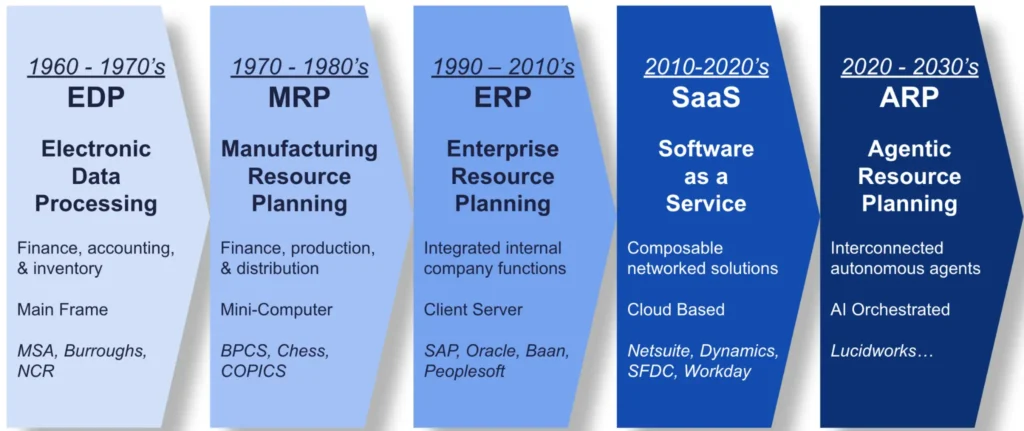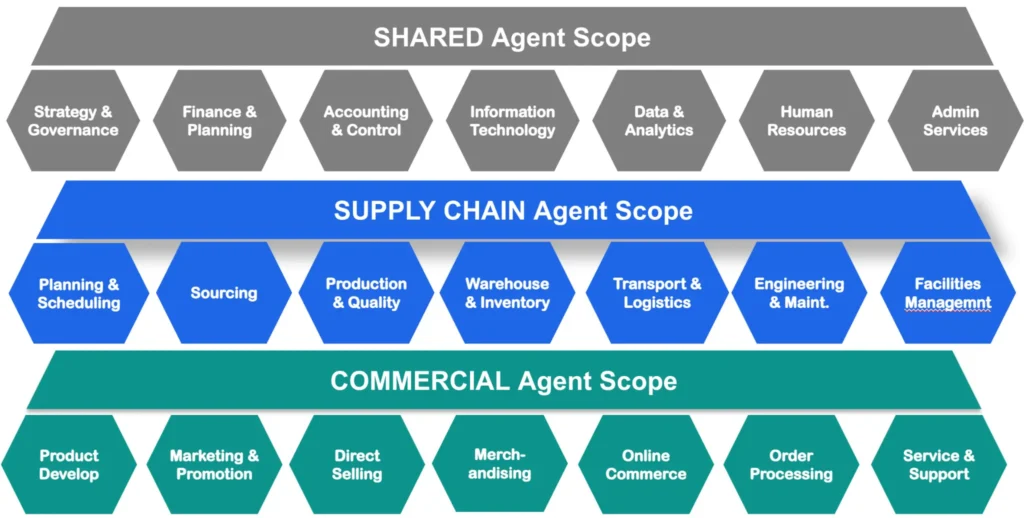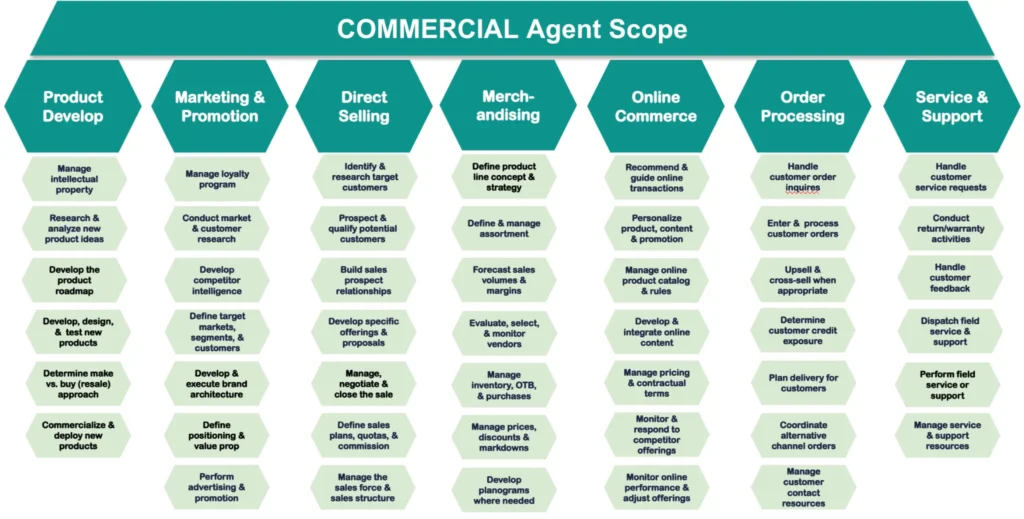
Building Tomorrow’s Enterprise: Why Agentic Commerce Protocol is the First Step to an Agentic Resource Planning Platform
As of this writing, the new-new thing in AI is Agentic Commerce Protocol (ACP). ACP enables Large Language Model (LLM) users to make purchases directly from inside a Generative AI platform. The first ACP applications, developed and released by OpenAI, allow ChatGPT users to make a limited number of commercial transactions with a small set of vendors. These are baby steps that will soon expand to include more products, vendors, and functionality.
To properly plan and deploy ACP, however, companies must start thinking about how ACP fits into the overall enterprise systems architecture. Because that enterprise architecture is all about to change. Again. Much like ERP replaced MRP and SaaS displaced Client Server, Agentic Resource Planning (ARP) will emerge as the dominant enterprise system.

For decades, Enterprise Resource Planning (ERP) systems have been the central nervous system of modern business. These monolithic platforms brought order to chaos, integrating everything from finance and human resources to manufacturing and supply chain management into a single source of truth. Yet, for all their power, ERPs remain fundamentally reactive.
ERP systems are sophisticated tools that require skilled human operators to analyze their data and execute commands. The next paradigm shift in enterprise management is about transforming the system from a passive tool into a proactive, intelligent entity. This is the dawn of Agentic Resource Planning (ARP).
Defining Agentic Resource Planning (ARP): The Autonomous Enterprise
Agentic Resource Planning (ARP) represents the evolution of the ERP, infusing its comprehensive data backbone with a distributed network of autonomous AI agents. If an ERP is the body’s skeleton and circulatory system—providing structure and data flow—an ARP is the addition of an autonomous nervous system that can sense, think, and act on its own.
In an ARP ecosystem, specific business functions are not just digitized; they are “agentified.” Instead of a human analyst running a report to check inventory levels, an Inventory Agent proactively monitors stock, predicts future demand based on market signals, and autonomously negotiates with Supplier Agents to replenish supplies at the optimal price and time. A Finance Agent doesn’t just record transactions; it dynamically manages cash flow, optimizes investments, and executes trades based on predefined risk parameters.
The core characteristics of an ARP are:
- Autonomy: Agents operate independently to achieve specific, goal-oriented tasks without constant human intervention.
- Proactivity: They anticipate future needs and opportunities, acting to prevent problems rather than just responding to them.
- Collaboration: Agents communicate, negotiate, and collaborate with each other—both internally and externally—to achieve complex, cross-functional objectives.
- Learning: They continuously adapt and improve their performance based on new data and the outcomes of their past actions.
The promise of ARP is a business that runs with unprecedented efficiency, agility, and intelligence. But building such a system is a monumental task. The exhibit below shows one example of the full scope of an ARP system.

Attempting to “rip and replace” a deeply entrenched ERP is not only impractical but also incredibly risky. The logical approach is a phased migration, and the most strategic starting point is at the edge of the enterprise: with the customer.
The Strategic Starting Point: Agentic Commerce Protocol (ACP) for Customer-Facing Processes
The most important and high-impact area for any business is its interface with the market. How a company attracts, converts, and serves its customers directly determines its revenue and growth. This is why beginning the ARP journey by defining the Agentic customer-facing processes is the highest priority. All of the other functions must serve and support the customer experience. The exhibit below highlights the commercial process that will be conducted by agents over time.

Adopting an Agentic Commerce Protocol (ACP) model is not merely a technological upgrade. Success requires a fundamental shift in core business processes. Businesses must evolve from designing human-centric workflows to creating machine-centric, Agent-driven ecosystems.
Here are the key business processes that need to be updated or modified to support ACP:
1. Product Information Management (PIM) and Merchandising
- From: Human-Readable Content. Traditional processes focus on creating persuasive, visually appealing product descriptions, titles, and images designed to attract a human shopper. Search Engine Optimization (SEO) is designed to cater to human search queries.
- To: Machine-Readable Structured Data. An AI agent is not swayed by clever marketing copy; it requires precise, structured data. The PIM process must be updated to enrich every product with a deep set of attributes (e.g., exact dimensions, materials, weight, color hex codes, compatibility standards, power consumption). This means merchandising teams must shift their focus from just storytelling to rigorous data tagging and categorization. SEO evolves to “AIO” (Artificial Intelligence Optimization), ensuring product data is perfectly structured for agent-based discovery.
2. Sales and Pricing Strategy
- From: Static Pricing and Manual Negotiations. Pricing is often set manually or with simple rules. Sales processes may involve human interaction for discounts, bundles, or custom quotes.
- To: Dynamic Pricing and Automated Negotiation Rules. Agents can compare prices across thousands of vendors in milliseconds. Businesses must implement dynamic pricing engines that can respond to market conditions in real-time. The “sales” process becomes a set of pre-defined rules encoded into an API. The business must decide and program its negotiation parameters: What is the acceptable discount range? What bundles can be automatically offered? What are the triggers for escalating to a human sales associate?
3. IT Architecture and Data Management
- From: Website-First or Monolithic Systems. The company website is the primary storefront, and backend systems are designed to support it. Data updates (like inventory) may occur in batches.
- To: API-First and Headless Architecture. The LLM is the new storefront. The entire IT philosophy must shift to a model where the primary interface for commerce is AI, which both the company’s own website and external agents consume. Data governance becomes paramount, ensuring that information, such as inventory levels and shipping times, is 100% real-time and accurate.
4. Supply Chain and Fulfillment
- From: Tolerance for Latency. Traditional e-commerce has a built-in human latency buffer between order placement, processing, and shipping. Inventory updates might lag by a few minutes.
- To: Real-Time, Event-Driven Logistics. An agent-driven order requires immediate confirmation and execution. The moment a transaction is confirmed, the fulfillment process must be triggered automatically. Inventory management systems must be event-driven, instantly decrementing stock across the entire ecosystem to prevent double-selling. Furthermore, logistics data (carrier information, tracking numbers, estimated delivery dates) must be exposed for the customer’s agent to consume directly.
5. Customer Support and Service
- From: Human-Centric Support Channels. Support is primarily handled through call centers, email tickets, and scripted chatbots designed for common human queries.
- To: Automated, API-Driven Resolution. A customer’s agent will handle routine service issues. The support process must be re-engineered to provide API endpoints for actions like initiating a return, checking refund status, reporting a damaged item, or querying warranty information. The system must be able to programmatically evaluate a request against business rules and provide an immediate, automated resolution. Human support agents transition to a higher-level role, managing exceptions and complex cases escalated by the automated system.
6. Legal and Compliance
- From: Prose-Based Terms and Conditions. Legal documents, such as Terms of Service and Privacy Policies, are written in long-form text for humans.
- To: Machine-Readable Policies. While human-readable versions will still exist, businesses will need to create machine-readable summaries or structured data versions of their commercial policies. An agent needs to be able to programmatically parse key terms: What is the return window? What are the warranty conditions? How is user data handled? This ensures transparent and automated compliance, as the agent can verify terms before executing a transaction on behalf of its user.
In summary, supporting ACP requires transforming the enterprise into a real-time, data-driven, and highly automated entity. It’s a holistic shift that redefines the concept of a “customer interaction” from a human conversation to a high-speed, structured data exchange.
The journey from a traditional ERP to a fully realized ARP is a strategic evolution. Using ACP as the first step initiates a multi-phase transformation that gradually infuses the entire organization with agentic intelligence.